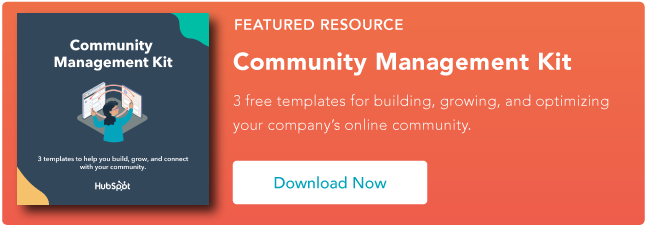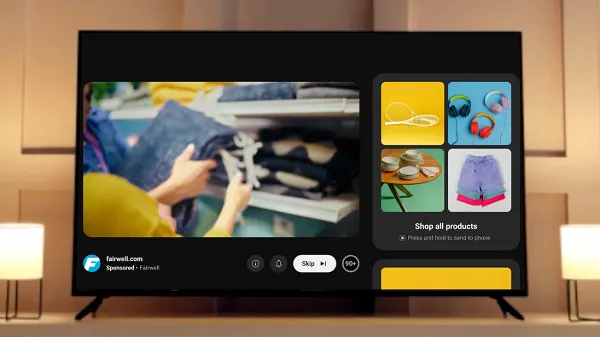Building a Community Management Strategy That Actually Creates Connection
The concept of managing communities may seem straightforward.

The concept of managing communities may seem straightforward. But a community management strategy is what separates the ‘omg I love them!’ brands from all the rest. If you really want to make an impact on your audience, it’s going to require a little bit of planning. Come with me to take your community management efforts to the next level. Table of Contents A community management strategy is a plan of action for engaging with the people who interact with your brand. Your strategy should detail what your community management goals are, who your community is, where your community is most active, which metrics determine success, and how you intend to strengthen relationships with your customers, partners, and employees. Think about some of your favorite brands and how they interact with their audiences. Personally, I love Duolingo’s approach to community management. It’s authentic, consistent, and human. When you see the Duo owl in the comments section on TikTok, it’s to be expected. It’s almost like they belong there. Plus, they get an A+ from me on content creation. Posts like these are a big part of why my Spanish-learning streak is still alive. (I’m on day 580, btw.) While this strategy works for Duolingo, it won’t work for everyone. That’s because your community management strategy is unique to your brand. It all depends on who your audience is and what you want to accomplish. Jenny Sowyrda, manager of community strategy and operations at HubSpot, says you’ll want to take “the needs of your community members, the key goals associated with your community, and the business goals of your community” into consideration when designing your strategy. And sometimes, those needs and goals will change as you begin to scale. But before we talk about growth, let’s start with six simple steps to help you get your community up and running. The first step to develop a community management strategy (that actually works) is understanding what success looks like for your brand. What do you want to achieve? Your answer may include one or more of the following: Defining objectives upfront helps you lay the groundwork for your entire strategy. Every decision you make from this point on — such as choosing platforms and content types — will tie back to this step. After you define your primary objectives, the next thing to do is identify and understand your audience. That means gathering data on your current and target customers, including: To gather this intel, I recommend starting with market research, social media analytics, and customer surveys. Taking time to understand the target audience will help you refine your communication strategy and tailor your activities to their needs and interests. Next, choose the platforms where your communities are most active. That could include social media, a forum like Reddit, Slack channels, or even offline meetups. When choosing the best platform for your target community, consider these factors: A big part of a successful community management strategy is being in the right place at the right time. Your targets will naturally flow from your primary objectives. For example: If the primary goal is to increase engagement, a sample target could be to increase the average comments per social media post by 15% in the next three months. Or, if the goal is to gather feedback in order to improve a product, a potential target could be to collect and respond to at least 100 customer feedback submissions each month. My top tip? Set realistic targets. Here’s how: Max Pete, community engagement program manager at Square, also notes the importance of aligning your targets with your company resources. “Realistically, you have to have bandwidth and capacity. Otherwise, you're setting yourself up to fail,” says Pete. “Consider what needs to get done ASAP and what’s going to make the biggest impact — while also keeping in line with budget and realistic timelines for you and your team.” For example, if you’re a solopreneur, try responding to comments within 48 hours instead of a more ambitious target like 12 hours. It's great to aim high, but it’s also important to understand what’s achievable with your current resources. Consistent posting and active engagement are crucial to keeping your community vibrant. Make sure you have a steady stream of content flowing so you sustain interest. Depending on your goals and the type of community, content could include: Regular posting helps maintain visibility in your members’ feeds and keeps your brand on top of their minds. That said, life happens, and you can‘t be online every minute. Don’t let that silence your community. Content calendars, as shown in the video below, are a great way to plan ahead. And tools like HubSpot’s Marketing Hub let you schedule posts in advance. Aside from posting, remember to interact with your people. Like their comments and respond to their questions or concerns. Show them that you value their support. In turn, you’re likely to get even more insight into their needs, preferences, and challenges. Finally, it’s time to see if your hard work is paying off. Take the time to evaluate your metrics. This will tell you whether what you’re doing is resonating with your audience. If not, you may need to change tactics. Here are some tried-and-true methods for tracking your success: My advice? Don‘t get hung up too much on quantitative data. Numbers can’t always capture the magic of a thriving community. Plus, community building takes time. Be patient, and focus on the long game. You now have the ingredients to start a community that your customers, partners, and supporters want to be a part of. When you put them all together into a cohesive strategy, that’s when the magic really happens.
What is a community management strategy?

How to Create a Community Management Strategy
1. Define your objectives.
2. Identify your audience.
3. Choose the right channels.
4. Set your targets.

5. Post regularly and engage with your audience.
6. Measure your results.
Create, Connect, Engage

 Tekef
Tekef ![3 Community Management Templates [Free Kit]](https://no-cache.hubspot.com/cta/default/53/866a5201-b39e-4edb-9e7f-65c0d98a9ea0.png)





























.jpg&h=630&w=1200&q=100&v=a905e78df5&c=1)



